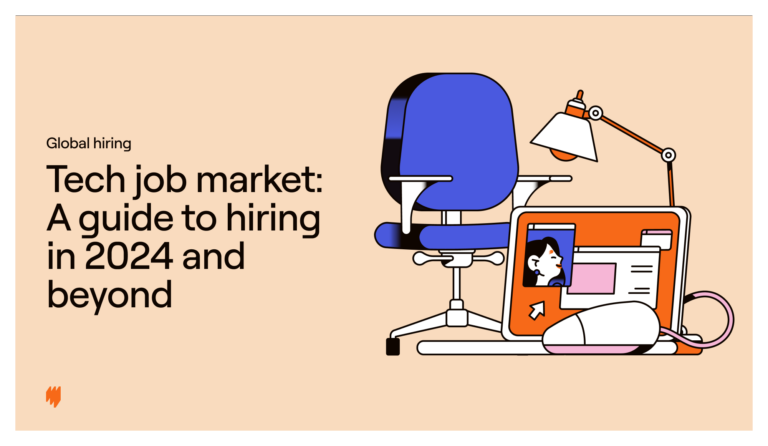Who is a leased employee?
A leased employee is someone a business hires through a staffing agency or using a PEO on a temporary basis. Leased employees are generally brought in for their expertise on specific projects or to fill in for permanent employees on leave. In this arrangement, the employee works for the client while the staffing agency or the PEO takes care of payroll, benefits, and other administrative tasks.
How are leased workers different from freelancers or temporary workers?
The differences between leased employees and freelancers majorly lie in the administrative aspects.
When a business onboards a leased employee, they remain officially employed with the staffing agency or the PEO with which the firm has partnered.
These staffing agencies or PEOs manage the leased employees end-to-end. They take care of their compensation, insurance, benefits, leaves, and taxes. A leased employee will work at the client’s organization just like a full-time employee, while the responsibility will lie on the agency.
Freelancers, on the other hand, work independently; that is, they are not officially employed with any organization. The purpose of hiring a freelancer may be similar to why a business hires leased workers. However, freelancers take care of their taxes and insurance on their own, and businesses have little to no contribution there. In this arrangement, an organization is responsible for paying the freelancers on time and for tracking the number of hours/days they work. Businesses generally have little control over the working hours of their freelancers. They may not work according to your company’s working hours, which sometimes makes collaboration challenging.
A temporary worker or temp can sometimes be considered a leased worker. However, the purpose of hiring them is quite different. Temporary workers are hired for a very short time and generally support the internal teams in their projects. They may not necessarily have a lot of experience or expertise in any particular field. Temporary workers are also hired through agencies that take care of their payments, benefits, and taxes.
Benefits of bringing in leased employees
Hiring leased employees can prove to be very beneficial for an organization in terms of both, costs and productivity. Below listed are some of the significant advantages of onboarding leased employees:
- Quick hiring: One of the most challenging aspects of hiring employees is the time it takes to shortlist, interview, and select a candidate. This can be easily avoided by onboarding leased employees through an agency. This proves to be very beneficial for businesses when they need to hire for an important and urgent project.
- Access to expertise: You can specifically ask your staffing agency for employees with expertise in the field of your project. Staffing agencies generally have a large pool of qualified employees across industries.
- Reduced administrative load: One of the main benefits of hiring leased workers is that you don’t need to worry about payroll, benefits, or taxation. The staffing agency or the PEO will handle all administrative tasks, and you can solely focus on the job at hand.
- Increased productivity: Leased employees work at your company just like any other full-time employee. This, when compared to hiring freelancers, becomes another benefit because leased workers solely focus on completing your projects. You have more control over the working hours of your leased employees as compared to independent contractors.
- Morale boost for permanent employees: Onboarding leased employees on a temporary basis also helps boost your permanent employees’ morale. They appreciate the fact that you have brought in more people to help with the job instead of increasing the workload on internal employees.
These were some of the major benefits of hiring leased employees in your organization. Since leased employees work so closely with your permanent employees, they can often be transitioned to permanent or common-law employees.
How to classify a leased employee as a common-law employee?
It is clear that a leased employee is the official employee of the staffing agency or the PEO through which they have been hired. However, a leased worker can be classified as a permanent employee of the client’s organization when each of the following statements stands true:
The leased employee has been working for the client’s organization for an elongated period. Here, a period is considered elongated under the following conditions:
- The leased employee has been working for the client company full-time for one year
- The number of hours worked at one organization is more than 1500, or
- The number of hours worked is 75% of the average number of hours worked by a permanent employee of that organization
- The client company makes hiring or firing decisions of a leased employee
- The client company decides the wages or the compensation for the leased worker
- The client company directly supervises and directs the job of the leased worker
If all of these conditions hold true, a leased employee can be classified as a common-law employee of an organization. If the leased employee transitions into becoming a common-law employee, the client company will be responsible for setting up a retirement plan for the employee. Subsequently, they will have to process the necessary paperwork and make contributions for the same.
Tax reporting for a leased worker
Employers are responsible for the tax reporting of full-time employees, which is a significant part of the payroll process. However, this becomes easy for internal teams as employees submit the right paperwork. However, tax reporting for leased employees can be different.
In most cases, the staffing agencies or the PEOs handle the payroll, benefits, and taxation for your leased employees, but there are some agencies that do not provide these services. Here, the clients will be responsible for the tax reporting and payroll of a leased employee just like they are for their regular employees.
Tax reporting and payroll also become the client’s responsibility if a leased employee becomes a common-law employee of that company.
Now that you are familiar with leased employees and the benefits of onboarding them, here’s a quick guide to hiring leased employees.
How to hire a leased employee?
The best way to approach employee leasing is through a staffing agency or a professional employer organization (PEO).
Staffing agencies generally have a variety of employees ranging from freshers to experienced workers, and they can also help you choose employees with expertise in specific fields. The hiring process is fairly straightforward, minimizing the administrative load on your HR teams. Staffing agencies may also provide a 30-90 day trial period for leased employees so you can check the quality of work, team fitment, etc.
Another way of leasing employees is through a PEO such as Multiplier. Most PEOs are certified to handle payroll, insurance, and benefits for your employees. The only difference with PEOs is that you will need to source the candidate yourself, and the PEO will help you onboard them and handle administrative tasks.
A key benefit of working with a PEO like Multiplier is that you have access to global hiring. Multiplier can help you hire employees in over 150 countries and diversify your teams. Our user-friendly dashboard will provide you will all the required details about your employees and maintain 100% visibility. With Multiplier, you can also track leaves and bonuses for your employees in a few simple clicks.
Before hiring leased employees, you must understand your business needs and the kind of employees you want. You must also perform thorough due diligence on the staffing agency or PEO that you have decided to partner with and carefully understand the extent of services they offer. It is advised that you work with PEOs or agencies that will handle administrative tasks like payroll, insurance, benefits, and taxation at their end.
Frequently asked questions
Q. Who is the legal employer of a leased employee?
The staffing agency or the PEO remains the official and legal employer of the leased employees, even though they may be performing services for your company.
Q. How do I process taxes for a leased employee?
Typically, you do not need to process taxes for your leased employees as the staffing agency or the PEO will do it for you. However, if your leasing partner does not provide that service, you must process the taxes for your leased employee just like you would for a regular employee.
Q. Are leased employees eligible for benefits?
Like taxation, the staffing agency or the PEO also handles the benefits and insurance for your leased employees. However, if a leased employee transitions into a common-law employee at your company, you will need to start a retirement plan for them.
Q. When should I hire leased employees?
Generally, companies turn to leased employees when they require a workforce, but they don’t have the time or capacity to handle the administrative tasks that generic hiring brings along.
Q. How does a PEO impact my role as an employer?
A PEO will handle all the backend administrative tasks, including payroll, taxation, compliance, insurance, and benefits for you. The general day-to-day management of your employee and task allocation will still be in your hands.

Binita Gajjar
Content Marketing Lead
Binita is a Content Marketing Lead at Multiplier





